
Frederick O. Bemm (Active: 1910’s – 1930’s)
“When the World Turned to Color ” — 20th exhibition of Šechtl & Voseček Museum of Photography.
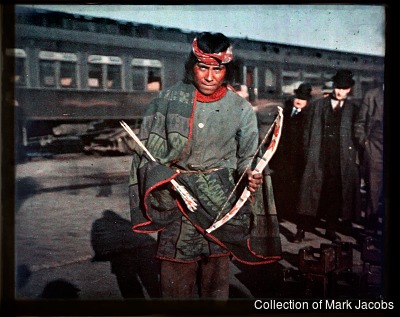
-
Native American.
Frederick O. Bemm (Active: 1910’s – 1930’s)
Autochrome 4 × 3 ¼ inches,
Owner of the original autochrome: Collection of Mark Jacobs All rights reserved, use of the digital reproduction is possible only with written permission from the owner of photographBemm was a staff photographer for the Art Institute of Chicago and later owned and operated a studio. His work appears in many magazines of the period. Rail lines such as those operated by the Atchison, Topeka and Santa Fe Railway, the Gulf Coast and Santa Fe Railway, the Kansas Pacific Railway, and the St. Louis – San Francisco Railway, brought wave upon wave of passengers to the American West. Entrepreneurs such as Fred Harvey catered for these tourists by establishing dining facilities along these routes which, in some cases, evolved to become landmark hotels located in Santa Fe and Gallup, New Mexico, in Winslow, Arizona, and at the South Rim and the bottom of the Grand Canyon. Harvey was also known for pioneering the art of commercial cultural tourism. His “Indian Detours” were meant to provide an “authentic” look at Native Americans in order to promote ticket sales to tourists. Local Native Americans would also use train stops to sell souvenirs to the tourist
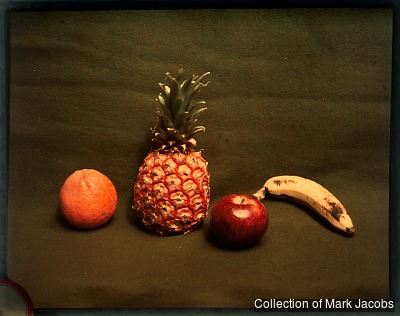
-
Ripe Fruit.
Frederick O. Bemm (Active: 1910’s – 1930’s)
Autochrome 4 × 3 ¼ inches,
Owner of the original autochrome: Collection of Mark Jacobs All rights reserved, use of the digital reproduction is possible only with written permission from the owner of photographThe aesthetics of this two images is truely modern, evoking Andy Warhol’s work. There is a sense of whimsy, playfulness, fantasy and yes, irony, but by no means arbitrariness. Capricious humor often results in camp—an aesthetic sensibility that regards something appealing or humorous because of its deliberate ridiculousness. The artistic still-life has a long history of being taken rather seriously by both the painter and later, by the photographer, particularly by European photographers. What Bemm has done here is to turn that whole concept on it’s head. He has upended the seriousness of the status quo and thus these two images, when seen as as pair, can legitimately lay claim to being precursors to postmodernism.
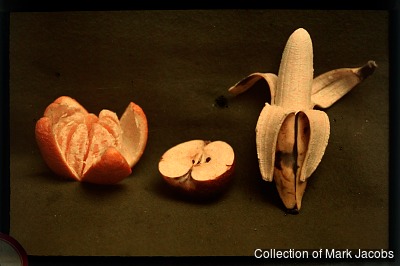
-
Peeled and Sliced Fruit.
Frederick O. Bemm (Active: 1910’s – 1930’s)
Autochrome 4 × 3 ¼ inches,
Owner of the original autochrome: Collection of Mark Jacobs All rights reserved, use of the digital reproduction is possible only with written permission from the owner of photograph 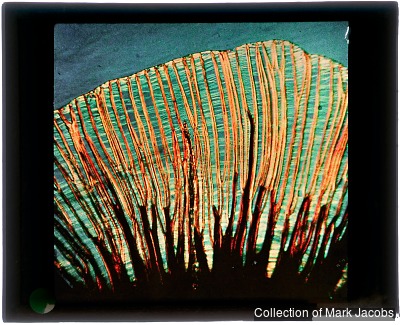
-
Magnification of a Rock.
Frederick O. Bemm (Active: 1910’s – 1930’s)
Autochrome 4 × 3 ¼ inches,
Owner of the original autochrome: Collection of Mark Jacobs All rights reserved, use of the digital reproduction is possible only with written permission from the owner of photograph 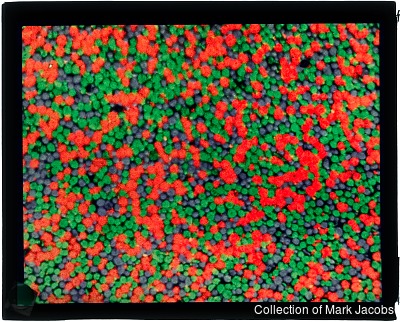
-
Magnification of an Autochrome.
Frederick O. Bemm (Active: 1910’s – 1930’s)
Autochrome 4 × 3 ¼ inches,
Owner of the original autochrome: Collection of Mark Jacobs All rights reserved, use of the digital reproduction is possible only with written permission from the owner of photographThe image is a magnification of the starch grains of an Autochrome plate taken with the use of a microscope onto another Autochrome plate. Such microscopic autochromes of another autochrome are quite rare. The Autochrome filter consists of microscopic (avg. size 10 to 15 microns) transparent grains of potato starch which had been dyed red-orange, green and blue-violet. The whole batch of the red-orange, green and blue-violet colored starches were mixed together, producing a substance of uniform grey color. To obtain the best chromatic balance, the ideal proportion of each dye was evaluated on the basis of a device that had been especially created for this application. According to the overall color of the mixture, one added a little of this or that starch to approach the required shade. On average, this mixture was made up of 32% orange starch, 41% green starch and 27% violet starch.